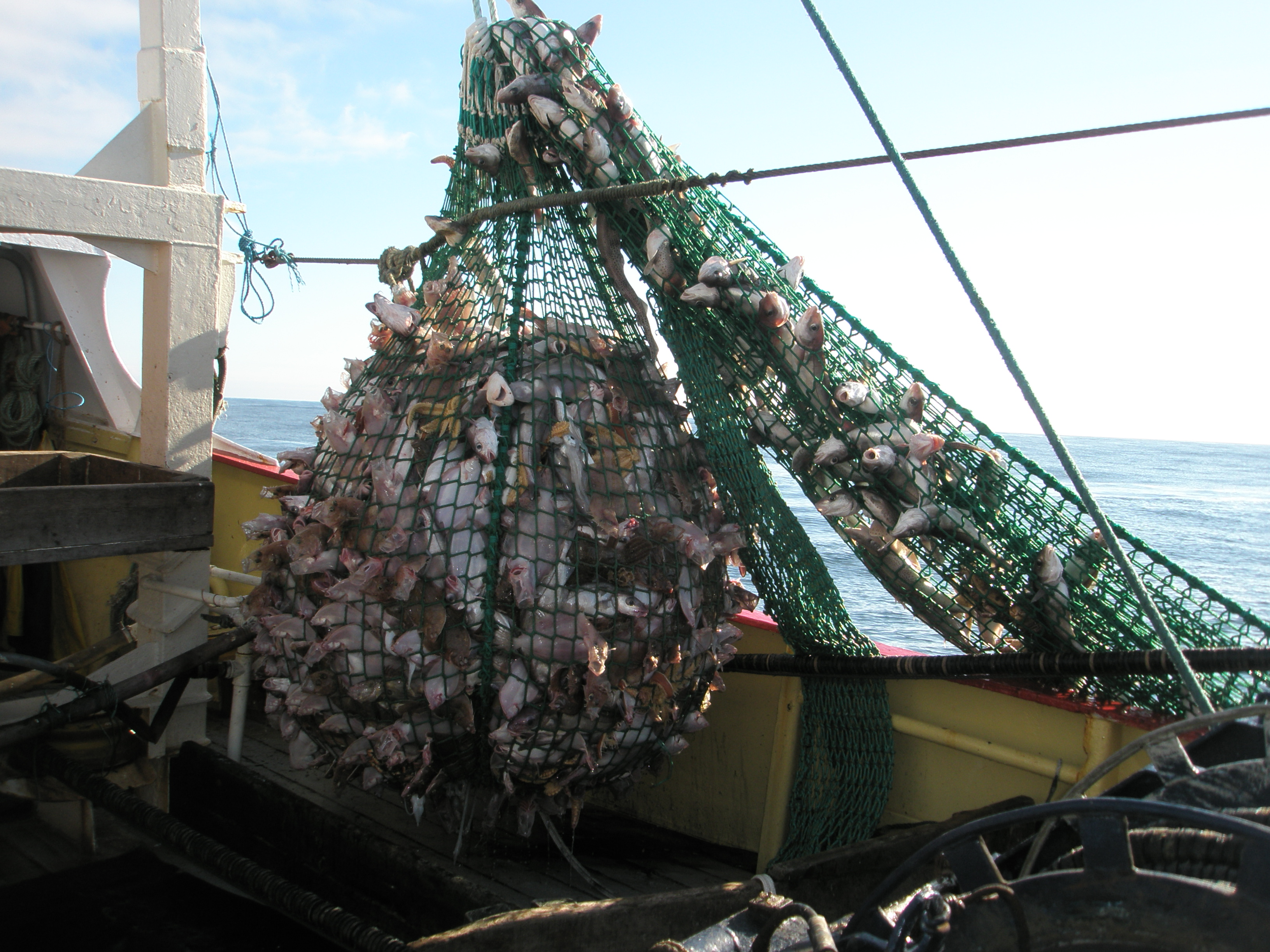Square Mesh Cod-ends
Summary
An effective device for the release of small undersized round fish, with a square mesh on top and/or lower panels in the cod-end and/or extension.

Size selectivity
As the mesh size and shape stays constant, square mesh cod-ends are very efficient at allowing the easy release of small round fish, whilst retaining the larger fish. However, the device isn't so effective on flat fish due to the shape of the meshes when towing.
Other information
Several skippers have been experimenting with this type of cod-end and it was trialled as part of the CEFAS 50% project on some beam trawlers in South West England. In many of the flat fish fisheries the skippers are adopting square mesh cod-ends to prevent capture of the many small round fish yet retain almost all the flatfish above the minimum landing size (MLS). For the release of small undersized round fish square mesh on top and/or lower panels in the cod-end and/or extension is one of the most effective escape devices available. With the square open meshes being at the aft end of the trawl where there is a much reduced water flow the small fish have time to recover from the trauma of being captured and swept down the trawl. By being exposed to the square mesh for the duration of the tow they have adequate time find their escape path through the open meshes unlike a square mesh panel where they have only a few seconds to make their escape.
The size of square mesh used needs to be balanced to the size of round fish that the vessel wants to retain. The square shape of the mesh better suits the cross sectional shape of the round fish for escape through the meshes than the shape of flat fish. Many skippers have reported that they have seen no difference in the retained catch of flat fish when they have fitted a square mesh cod-end of a similar mesh size to their original diamond mesh, but have managed to release in the region of 90% of the small round fish.
To further improve the selectivity of a square mesh cod-end it can be made using 4 panels (if regulation allows this in the particular fishery) instead of the normal two as this helps the extension stay more open allowing the fish more space to swim in before escape. Trials with square mesh cod-ends in nephrops fisheries have resulted in the loss of many of the smaller nephrops through the open meshes. With a bit of work it may be possible to get a configuration of square and diamond mesh in a nephrops trawl that will release most of the small round fish but retain enough of the larger nephrops for the vessel to maintain its profitability.
There have been a few legislative issues with the use of square mesh cod-ends and extensions so it is always better to check with the local fishery officer before using one. When cod-ends and extensions of square mesh (T45) and T90 mesh are used they are much more stable as they are being towed than a diamond mesh cod-end. This is due to the improved much water flow through the cod-end and results in improved catch quality and increased opportunity for small fish to escape.
Selection type
-
- Pre-selection